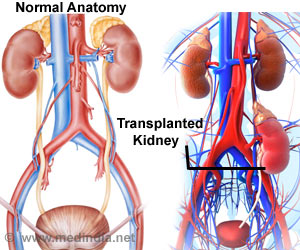Both these findings were presented at the European Respiratory Society International Congress in Milan, Italy(
).
People with OSA often snore loudly, their breathing starts and stops during the night, and they may wake up several times. This can lower the amount of oxygen in the blood and cause tiredness. It can also increase the risk of
.
CPAP machines are offered to people with OSA to help them sleep better. They work by blowing air through a face mask throughout the night to prevent the user’s airways from closing. However, research on the effects of CPAP on cardiovascular disease has produced mixed results.
Advertisement
The heart disease study was presented by Dr Jordi de Batlle from Institut de Recerca Biomèdica de Lleida (IRBLleida), Lleida, Spain. He and his colleagues tracked down all 3,638 OSA patients living in Catalonia who had chosen to stop using CPAP in 2011. They compared these to a similar group of 3,638 OSA patients who continued to use CPAP until at least 2015 or until death.
When they compared the two groups, they found that those who continued to use CPAP had a 40% lower risk of dying by any cause, a 36% lower risk of dying from cardiovascular disease, and an 18% lower risk of being hospitalized with cardiovascular disease.
CPAP – A Viable Alternative for Weight Loss Drug?
The pilot study was presented by Dr. Cliona O’Donnell, a specialist registrar in respiratory medicine at St. Vincent’s University Hospital and University College Dublin, Ireland. She and her colleagues conducted a study with 30 patients suffering from OSA who underwent a computerized tomography (CT) coronary angiogram to assess any signs of narrowing in the blood vessels that supply the heart.
The patients were then randomly assigned to 24 weeks of treatment either using a CPAP machine at night, or injections with weight loss drug liraglutide, or both together.
Patients who showed signs of coronary artery disease in their first scan underwent a repeat scan at the end of the 24 weeks of treatment. Researchers used an artificial intelligence program to analyze the patients’ scans.
The patients who were treated with CPAP and those treated with CPAP and weight loss injections experienced reductions in the plaque build-up in their arteries and a reduction of inflammation in their aorta (the main artery that carries blood from the heart to the rest of the body). Patients who were treated with weight loss injections only did not experience these effects.
“Although this is a pilot study, meaning we cannot draw firm conclusions, we found improvements in some early signs of cardiovascular disease with CPAP treatment. This should now be further evaluated in larger studies.”
People with obstructive sleep apnea are at a higher risk of cardiovascular problems, but there are conflicting data on the effects of CPAP on reducing this risk. However, research using real-world data is showing that CPAP adherence is one of the key predictors for reducing cardiovascular risk and for better outcomes in general.
Here we have two studies: one large study showing that CPAP could help lower the risk of developing or dying from cardiovascular disease in people suffering from OSA and another small study suggesting that CPAP could be more beneficial than weight-loss therapy for people suffering from OSA.
OSA is an extremely common disease, with consequences for people’s daytime functioning and the health of their hearts, blood vessels, and metabolism. One of the treatment options is CPAP, and the more the patients use CPAP every night, the greater the reduction in cardiovascular illness and death. Therefore, there is a need for individualized treatment plans, patient engagement, educational activities, and close treatment follow-up in order to increase adherence to long-term treatment and improve outcomes for patients.
Reference :
- Sleep Apnea, the Risk of Developing Heart Failure, and Potential Benefits of Continuous Positive Airway Pressure (CPAP) Therapy
– (https://www.ncbi.nlm.nih.gov/pmc/articles/PMC6064879/)
Source: Eurekalert



